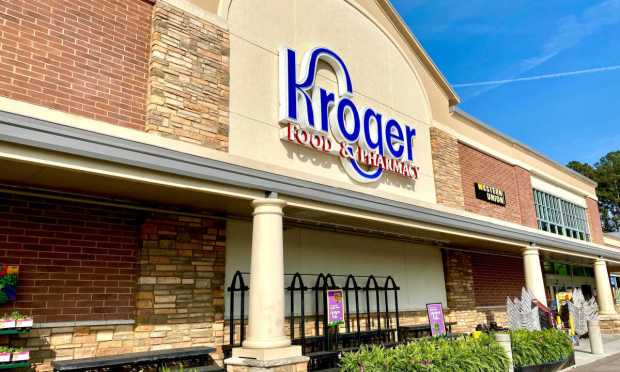Kroger Gains Share From Restaurants as Consumers Rethink Food Spending

Kroger is leveraging consumers’ inflation anxieties to capture spending that would otherwise go to restaurants.
The nation’s leading pure-play grocer said on a call with analysts Thursday (March 2) discussing its fourth-quarter 2022 financial results that, as consumers’ price concerns impact their spending, the company has benefitted from their shift to cooking at home.
“Our customers are looking for more ways to stretch their budget. The gap between food at home and food away from home spending grew in the fourth quarter as more customers gravitated toward affordable meal solutions that restaurants simply can’t provide,” CEO Rodney McMullen said. “Our research shows that cooking at home is three to four times less expensive than dining out. And as Kroger was there for our customers.”
He added that, amid this environment, the company generated “total household growth” and “enhanced” loyalty.
Indeed, research from PYMNTS’ study, “Consumer Inflation Sentiment: Inflation Slowly Ebbs, but Consumer Outlook Remains Gloomy,” for which we surveyed more than 2,100 U.S. consumers, revealed that, in response to inflation, 78% of restaurant customers are eating at home more.
Yet, grocery spending is affected too. Findings from PYMNTS’ report “Consumer Inflation Sentiment: Perception Is Reality,” for which we surveyed more than 2,100 consumers in December, reveal that 69% of consumers have made changes to their grocery shopping lists in the last year in response to rising prices. Fifty-nine percent have reduced the quantities of items they are purchasing, and 35% have reduced the quality.
Kroger, for its part, driving loyalty in the face of those price anxieties with data-informed personalized offers.
“Our data science teams are using predictive science to serve customers the right products at the right time and at the best value, because we know our customers so well,” McMullen said. “We were able to provide recommendations to start their baskets and deliver personalized offers on the products most important to them, saving them time and money and making their lives easier. In return our customers reward us with their trust and loyalty.”
He added that, over the course of the year, the company saw record-breaking digital coupon use and, across digital and physical coupons, consumers redeemed more than $1.4 billion of value.
Certainly, coupons are a top priority for grocers today. Research from PYMNTS’ study “Big Retail’s Innovation Mandate: Convenience and Personalization,” created in collaboration with ACI Worldwide, found that 74% of grocers think that consumers would be very or extremely likely to switch merchants if digital coupons and rewards were not provided.
Indeed, consumers agree that these offers improve the experience. The “2023 Global Digital Shopping Index,” a PYMNTS and Cybersource collaboration, which draws from consumer panels from six countries spanning more than 13,000 participants, finds that 80% of U.S. consumers who used coupons were very or extremely satisfied with their shopping experience. In contrast, only 60% of those who did not use coupons said the same.
In the quarter, Kroger’s digital sales overall rose 12%, while delivery increased 22%.
PYMNTS’ study “Changes in Grocery Shopping Habits and Perception,” which drew from a December survey of more than 2,400 U.S. consumers, reveals that 45% of grocery shoppers buy groceries online at least some of the time, but only 7% of grocery shoppers do so all the time. That said, the share of consumers shopping digitally is on the rise. That 7% figure marks a 36-fold increase from pre-pandemic.

